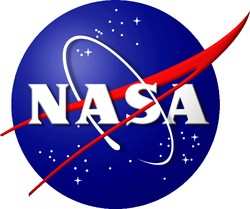Thu, Jul 26, 2012
NASA Conducts Mission Simulations in Hawaii
NASA is conducting a nine-day field test starting Tuesday outside Hilo, Hawaii, to evaluate new exploration techniques for the surface of the moon. These mission simulations, known as analog missions, are performed at extreme and often remote Earth locations to prepare for robotic and human missions to extraterrestrial destinations.

The In-Situ Resource Utilization (ISRU) analog mission is a collaboration of NASA partners, primarily the Canadian Space Agency (CSA), with help from the Pacific International Space Center for Exploration Systems (PISCES).
The ISRU analog mission will demonstrate techniques to prospect for lunar ice. The testing site near Hilo features lava-covered mountain soil similar to the ancient volcanic plains on the moon. The two main tests under way are the Regolith and Environment Science and Oxygen and Lunar Volatile Extraction (RESOLVE) and Moon Mars Analog Mission Activities (MMAMA).
The demonstration includes CSA's Artemis Jr. rover and a drill. These devices support the NASA RESOLVE payload. RESOLVE is designed to prospect for water, ice and other lunar resources. It also will demonstrate how future explorers can take advantage of resources at potential landing sites. The rover and its onboard instrumentation are about as tall as a human and weigh about 660 pounds, three times heavier than the equipment that would be used on an actual mission.
MMAMA is a group of small projects and tests that will define the requirements for navigation, mobility, communications, sample processing, curating and other critical elements that could be used in future science and exploration missions. Using another CSA rover, Juno, and payload interfaces, the MMAMA suite of tests includes analysis of regolith using pyrolysis (which is breaking down the samples by heating them), robotic resource mapping, a miniaturized Mossbauer spectrometer, and a combined miniaturized Mossbauer and X-Ray fluorescence spectrometer. A team of engineers and researchers will monitor all of the tests from a mission control set up in Hawaii.
Lessons learned from the ISRU project will become increasingly important as NASA embarks on deep-space missions. Instead of having to launch from Earth with all the supplies needed, a human crew could go into space knowing that natural resources already are waiting for them.
More News
Also: New Lakeland Fly-in!, Gleim's DPE, MOSAIC! Nearly three-quarters of a century in the making, EAA is excited about the future… especially with the potential of a MOSAIC>[...]
Estimated (EST) -When used in NOTAMs “EST” is a contraction that is used by the issuing authority only when the condition is expected to return to service prior to the >[...]
Aero Linx: Regional Airline Association (RAA) Regional airlines provide critical links connecting communities throughout North America to the national and international air transpo>[...]
The Airplane Broke Up In Flight And Descended To The Ground. The Debris Path Extended For About 1,435 Ft. Analysis: The pilot, who was the owner and builder of the experimental, am>[...]
From 2015 (YouTube version): History Comes Alive Thanks to A Magnificent CAF Effort The story of the Douglas C-47 named, “That’s all Brother,” is fascinating from>[...]
 Airborne 07.21.25: Nighthawk!, Hartzell Expands, Deltahawk 350HP!
Airborne 07.21.25: Nighthawk!, Hartzell Expands, Deltahawk 350HP! ANN's Daily Aero-Term (07.27.25): Estimated (EST)
ANN's Daily Aero-Term (07.27.25): Estimated (EST) ANN's Daily Aero-Linx (07.27.25)
ANN's Daily Aero-Linx (07.27.25) NTSB Final Report: Luce Buttercup
NTSB Final Report: Luce Buttercup Classic Aero-TV: 'That's All Brother'-Restoring a True Piece of Military History
Classic Aero-TV: 'That's All Brother'-Restoring a True Piece of Military History



